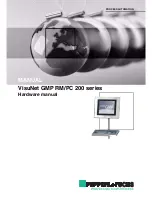
S12 Vet Monitor User’s Manual
8-31
8.13.
ECG Troubleshooting
This section lists the problems that might occur. If you encounter problems when
using the monitor or accessories, check the table below before requesting for services. If
the problem persists after you have taken corrective actions, contact your service
personnel.
Problem
Corrective Actions
Noisy ECG traces
1. Check that clips are not detached.
2.
Check that leadwires are not defective. Replace leadwires if necessary.
3. Check that patient cable or leadwires are routed too close to other
electrical devices. Move the patient cable or leadwires away from
electrical devices.
Excessive
electrosurgical
Interference
Use ESU-proof ECG cables.
Muscle Noise
Inadequate skin preparation, tremors, tense subject, and/or poor clip
placement.
1. Perform skin preparation again and re-place the clips. For more
information, see
8.4.1 Preparing the Patient Skin
2.
Avoid muscular areas.
Intermittent Signal
1. Check that cables are properly connected.
2. Check that clips are not detached. Perform skin preparation again as
described in
8.4.1 Preparing the Patient Skin
.
3. Check that the patient cable or leadwires are not damaged. Change
them if necessary.
Excessive
alarms:
heart rate, lead fault
1. Check that clips are not detached. Perform skin preparation again and
replace the clips. For more information, see
8.4.1 Preparing the Patient
Skin
.
2.
Check for excessive patient movement or muscle tremor. Reposition the
clips.
Low Amplitude ECG
Signal
1. Check that the ECG gain is not set too low. Adjust the gain as required.
For more information, see
8.5.5 Setting
ECG Waveforms
.
2. Perform skin preparation again and re-place the clips. For more
information, see
8.4.1 Preparing the Patient Skin
.
3. Check clip application sites. Avoid bone or muscular area.
















































